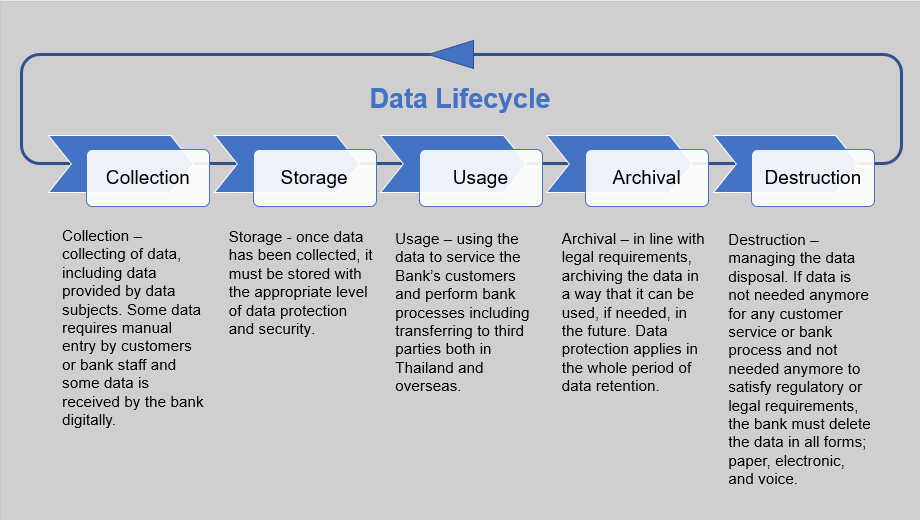Discovering the Significance of Information Devastation in the Context of Computer Protection Solutions and Protecting Confidential Information
In a period where data breaches are increasingly common, the relevance of efficient information devastation can not be overstated. Organizations has to embrace rigorous steps to make sure that sensitive info is not just shielded throughout its lifecycle yet likewise decisively eradicated when no much longer required. The approaches employed for data obliteration, combined with conformity to lawful requirements, play a pivotal duty in keeping confidentiality and trust. The effects of these methods extend beyond plain compliance, influencing a business's online reputation and functional integrity in the electronic market. What methods can organizations carry out to improve their data devastation protocols?
Understanding Data Damage
Data damage is a critical component of computer protection that entails the long-term elimination of information from storage space tools to prevent unapproved accessibility and prospective information breaches. In a significantly electronic landscape, organizations deal with increased threats connected with sensitive information being improperly accessed or exploited. Efficient information damage safeguards versus these dangers, ensuring that confidential dataâEUR" such as consumer details, intellectual home, and economic recordsâEUR" can not be recuperated after disposal.
Recognizing the value of data damage extends past simple conformity with legal and regulative frameworks; it is essential for maintaining organizational honesty and depend on. When data is improperly taken care of or inadequately ruined, the effects can be extreme, including monetary loss, reputational damages, and legal obligations.

Techniques of Information Obliteration

One prevalent approach is data wiping, which entails overwriting existing information with random patterns several times. This strategy renders the initial information irretrievable, making it a popular selection for organizations looking for to safeguard secret information.
Another technique is degaussing, which utilizes an effective magnetic field to interrupt the magnetic domain names on storage space devices, successfully eliminating the data. This method is especially efficient for magnetic media yet is not suitable to solid-state drives.
Physical damage is an additional robust technique, involving the shredding or crushing of storage space tools. This approach warranties that data healing is virtually difficult, making it optimal for highly delicate info.
Last but not least, file encryption can offer as a corresponding method to information elimination. By encrypting information prior to removal, organizations can add an added layer of safety and security, making certain that even if residues are recouped, they stay unattainable without the decryption trick. Each approach must be chosen based on the degree of information level of sensitivity and the certain safety needs of the company.
Legal Conformity and Data Protection
Organizations must navigate a complex landscape of lawful demands connected to information safety and security, specifically after carrying out approaches of data eradication. Different laws, such as the General Data Defense Guideline (GDPR) and the Medical Insurance Transportability and Responsibility Act (HIPAA), impose rigid standards on just how organizations should dispose and take care of of delicate data. Failing weblink to abide by these regulations can cause substantial legal effects, consisting of significant penalties and reputational damages.
Information damage processes have to be carefully documented to demonstrate conformity with applicable legislations and criteria. This documents not only works as proof of adherence to legal responsibilities yet also shows a dedication to guarding delicate information. Organizations should likewise establish clear plans regarding data retention and damage timelines, making sure that information is not held longer than essential.

Furthermore, normal audits and assessments of data destruction methods are necessary to preserve conformity and adjust to advancing lawful structures (data destruction). By proactively attending to legal demands, organizations can reduce risks associated with information violations and show their commitment to data security. Ultimately, focusing on lawful compliance in data damage processes is not just a regulatory responsibility, however an essential element of a durable information protection strategy
Influence On Organization Online Reputation
The track record of a business can be significantly affected by its approach to data devastation and administration. In today's digital landscape, where data violations can occur at any type of minute, the failure to effectively dispose of sensitive info can cause severe consequences. Organizations that improperly handle data destruction risk revealing confidential client info, which not just breaks personal privacy regulations but likewise erodes count on among customers and stakeholders.
A ruined reputation can result in reduced consumer loyalty, as customers end up being reluctant to involve with a service that has shown oversight in securing their information. Furthermore, unfavorable attention bordering a data violation can have a lasting result, as prospective consumers may be deterred by the regarded lack of protection. This can bring about a straight decrease in earnings and market share.
Moreover, businesses that prioritize data damage as part of their safety method can improve their online reputation by showcasing their dedication to safeguarding sensitive info. By embracing rigorous data monitoring practices, companies can not only reduce risks yet also place themselves as trustworthy entities in their respective sectors, thus enhancing their total brand photo.

Best Practices for Secure Disposal
Carrying out ideal techniques for safe and secure disposal of information is necessary for minimizing risks connected with data breaches and ensuring conformity with privacy regulations. Organizations must adopt a comprehensive information disposal policy that details procedures for both physical and electronic data devastation.
For physical data storage space gadgets, such as disk drives, shredding or degaussing is advised to avoid information healing. In addition, companies should maintain a chain of wardship paperwork during the disposal procedure, making sure liability and traceability of disposed items.
For digital information, making use of software program that sticks to market requirements for information wiping is important. This software application must overwrite existing information numerous times, making recuperation practically difficult. It is additionally essential to validate the effectiveness of the data devastation procedure through audits or third-party evaluations.
Educating employees on safe disposal techniques adds another layer of protection, as human error can commonly lead to information exposure. Regularly upgrading and assessing disposal policies guarantees positioning with progressing laws and technological developments. By executing these ideal techniques, companies can dramatically reduce the threat of unauthorized data access and enhance their overall data security approach.
Verdict
To conclude, information devastation is a basic facet of computer safety and security services that guarantees the protection of secret information from unauthorized access. Executing effective approaches of information removal, adhering to legal compliance, and recognizing the effect on service track record are necessary elements of an extensive data safety and security click for source strategy. By taking why not try here on ideal methods for secure disposal, companies can promote count on with clients and guard sensitive data, inevitably adding to a much more protected digital landscape.
In a period where information breaches are increasingly typical, the significance of reliable information damage can not be overstated.Data devastation is a critical component of computer security that entails the irreversible removal of data from storage space gadgets to avoid unauthorized gain access to and potential data breaches. Organizations should likewise establish clear plans concerning information retention and devastation timelines, making sure that data is not held longer than essential.
By proactively attending to legal requirements, companies can alleviate dangers connected with data violations and demonstrate their dedication to data security (data destruction). Eventually, focusing on legal conformity in data damage procedures is not just a regulative commitment, however a basic aspect of a robust information security technique
Comments on “Finest Practices for Data Destruction to Fortify Your Cyber Security Framework”